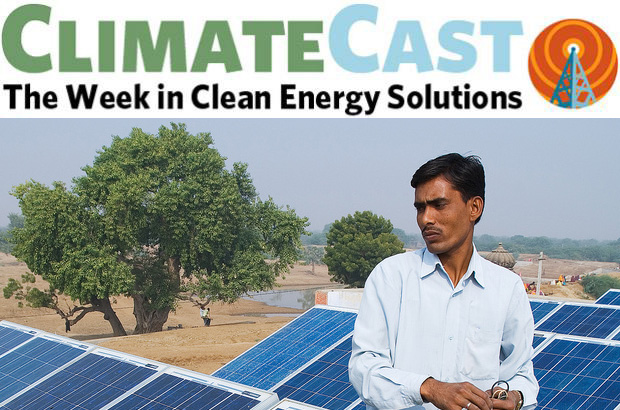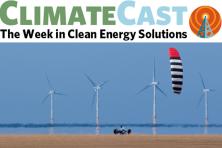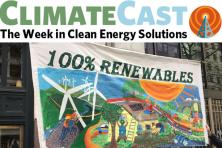Utilities adopt battery storage, shun new peaker plants
Southern California Edison plans to cover spikes in demand with grid-connected batteries instead of building new gas-fired peaker plants, a utility official said last month. The announcement is one example of how the electricity business is shifting toward energy storage, which helps to accommodate more renewable power. The municipal utility in Eugene, OR will test solar-powered microgrids with battery storage at three sites in its territory, and energy giant AES will buy 1 gigawatt-hour of batteries for its Advancion utility-scale energy storage facilities. A Thai housing development is testing a different approach, making hydrogen with excess power from its 114-kW solar array to operate fuel cells for night-time electricity.
Microfinance is key to solar electrification in India
Off-grid Indian solar electricity is getting a boost from micro-financing, which enables customers to pay off a home lighting system for as much as it costs to fill their lamps with kerosene: $5 to $7 per month. This model has also been tweaked for unofficial urban settlements, where a solar tea-and-cigarette shop charges lanterns and cell phones for local residents. In southern India, a husband-and-wife team developed electric scooters, motorcycles, and load-carriers with a 25-mile-range and have already sold 30,000 vehicles. As new energy futures take hold on the subcontinent—including plummeting prices for utility-scale solar—analysts are warning Australian coal firms not to count on the Indian market for long.
2015: the year climate broke into the news
2015 offered lots of Grist for climate writers to recap an eventful year that included the Paris climate talks; President Obama’s rejection of Keystone XL; EPA’s Clean Power Plan to reduce climate pollution from US electricity generation; the misfortunes of Arctic oil drilling; Hawaii’s visionary goal of 100 percent renewable electricity; the rising use and falling price of solar power; the collapsing price of oil; and the papal encyclical. More specialized reviews highlighted the impacts on utilities, the tussles over electricity rates, the worrisome news on climate impacts, and the breakthroughs and barriers facing climate action in California. As 2016 opened, others prognosticated about upcoming fights to keep fossil fuels in the ground and spotlight climate policy in the U.S. presidential campaign.
A year of climate impacts as well as climate action
Even before the official average annual temperature for 2015 is released, graphs and maps already demonstrated that it would set global heat records with impacts that ranged from Indonesian peat fires to flooding, cyclones, heat waves, and drought. The year closed with an extraordinary storm that brought above-freezing temperatures to the North Pole in late December, while New England ski resorts were bare of snow. Lakes around the world are also warming, said a paper published in Geophysical Research Letters. These regional climatic trends are linked to global warming with more certainty, according to new findings in Nature Climate Change.
WA carbon tax initiative submitted after brief hesitation
Proponents of an initiative to tax carbon pollution in Washington state decided last month to move forward with their proposal, after signaling their misgivings about its viability two days earlier. I-732 author Yoram Bauman wrote Dec. 21 that the initiative polls poorly and hasn’t attracted support from conservatives or the business community, leading his group to consider joining forces with the Alliance for Jobs and Clean Energy behind an alternative ballot measure. Ultimately, CarbonWA decided to submit its signatures to the state after all. A nonpartisan legislative analysis estimated last week that the initiative would lead to a $675 million revenue shortfall over four years—a finding that Bauman disputed in a KIRO radio interview.
Huge California methane leak still months from fix
A mammoth fossil gas leak near Los Angeles is still far from capped, more than two months after it was first detected. The plume of methane—imaged in this dramatic infrared video—has forced hundreds of nearby residents to relocate, and packs the same global warming punch as 7 million cars. In Alaska, new research suggests that winter methane emissions from permafrost are higher than previously thought, reinforcing calls such as this one for more vigorous controls on methane and other climate pollutants that remain in the atmosphere for years or decades instead of the millennia typical of carbon dioxide.
‘Rebound effect’ not as important as once reported
Although some analysts have asserted that energy efficiency improvements lead to smaller-than-expected declines in consumption because of the so-called “rebound effect,” new peer-reviewed research from two California scientists demonstrates that those claims are overblown. In a blog posted simultaneously with the paper, the researchers explain how the Breakthrough Institute misread the data, and criticize the media’s quickness to showcase these counter-intuitive findings. This debunking underscores the importance of new technologies that wring more useful work out of each kilowatt-hour, such as these steps being taken by greenhouse operators in the newly legalized Colorado marijuana industry.





